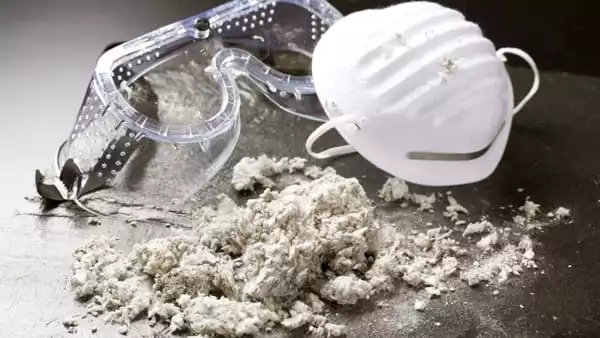What is asbestos?
Asbestos is a naturally occurring silicate material composed of thin, tiny threads. Asbestos is resistant to heat and chemicals, as well as being fireproof and strong. As a result, asbestos became a common ingredient in a wide range of goods. Individuals who have been exposed to asbestos incur health concerns such as cancer and other disorders.
Identification information
| Category | Silicate minerals |
| Formula | Mg3(Si2O5)(OH)4 |
| Color | Green, red, yellow, white, gray, blue |
| Mohs scale hardness | 2.5–6.0 |
| Crystal habit | Amorphous, granular, massive |
| Fracture | Fibrous |
| Cleavage | Prismatic |
| Luster | Silky |
| Streak | White |
| Specific gravity | 2.4–3.3 |
Asbestos and cancer
Asbestos is very fibrous, and the small fibers are easily inhaled, becoming stuck in the lungs. Asbestos exposure raises the chance of developing lung, ovarian, and laryngeal malignancies, as well as mesothelioma (cancer of the lining of the lung). These tumors frequently emerge decades after asbestos exposure.
Your asbestos cancer risk varies depending on the following factors:
- The amount of time you are exposed to asbestos fibers in the air.
- The number of asbestos fibers in the air we breathe.
- The frequency of asbestos fiber exposure.
- The time since the exposure.
- The age at which the exposure happened.
- Asbestos fiber size and type.
Transport workers (especially waterside employees), asbestos miners and millers, asbestos cement production workers, builders, plumbers, insulators, electricians, and mechanics are among those most likely to have been exposed to asbestos in the workplace.
Where does asbestos come from?
Although asbestos originates from all around the world, Russia, Kazakhstan, and China are the top exporters. The hazardous material was previously mined across North America.
Asbestos can be found in vast amounts or as a byproduct of other minerals like talc and vermiculite. Chrysotile asbestos is typically found in serpentine rock as veins.
While the majority of commercial asbestos deposits contain 5% to 6% asbestos, certain deposits, such as the Coalinga deposit in California, contain 50% or more asbestos.

What are the hazards of asbestos?
Asbestos is widely known as a health danger, and its usage is currently strictly controlled by OSHA and the EPA. The asbestos fibers linked to these health concerns are too tiny to see with the naked eye. Breathing asbestos fibers can result in asbestosis, an accumulation of scar-like tissue in the lungs that leads to loss of lung function and, in severe cases, death. Asbestos also causes lung cancer and other disorders such as mesothelioma of the pleura, a deadly malignant tumor of the membrane lining the hollow of the lung or stomach. Epidemiologic evidence is mounting that all asbestos fiber types, including the most widely used asbestos fiber, chrysotile, cause mesothelioma in people.
How harmful is asbestos?
There is no quantity of asbestos that is deemed safe. Products containing more than 1% asbestos minerals are classified asbestos-containing.
The more asbestos you are exposed to, the more probable it is that you may get an asbestos illness. Lung cancer and asbestosis are both dose-related illnesses. The more asbestos you breathe, the more likely you are to become ill.
Mesothelioma is the only asbestos-related illness that is distinct. Mesothelioma can be caused by very tiny levels of asbestos. The dust that asbestos workers took home on their garments caused mesothelioma in their families.
How can people be exposed to asbestos?
Disturbance of asbestos-containing material during product usage, demolition operations, building or house maintenance, repair, and remodeling can release asbestos fibers into the air. In general, asbestos-containing materials are only exposed when they are disturbed or broken in some manner, releasing particles and fibers into the air.





